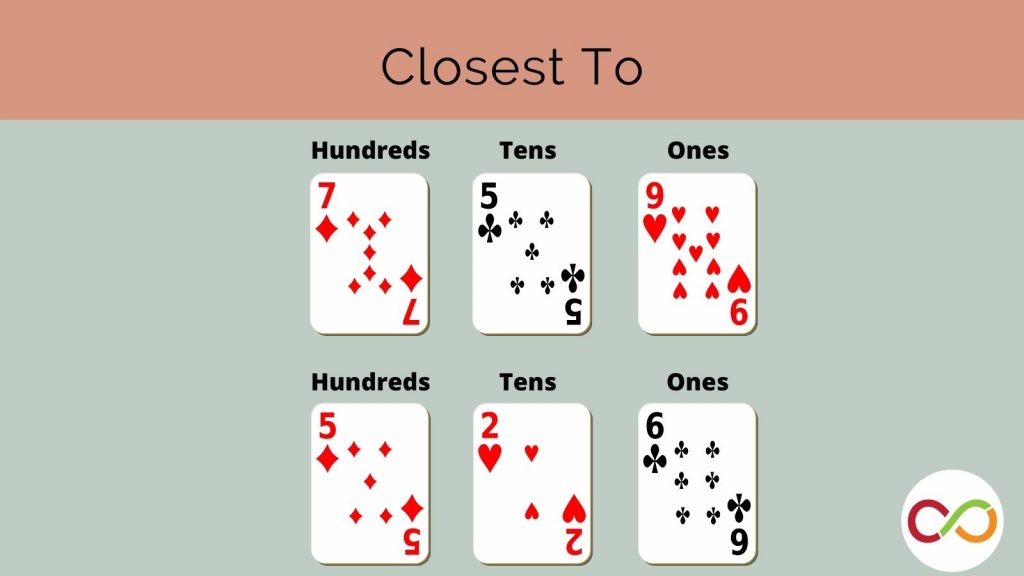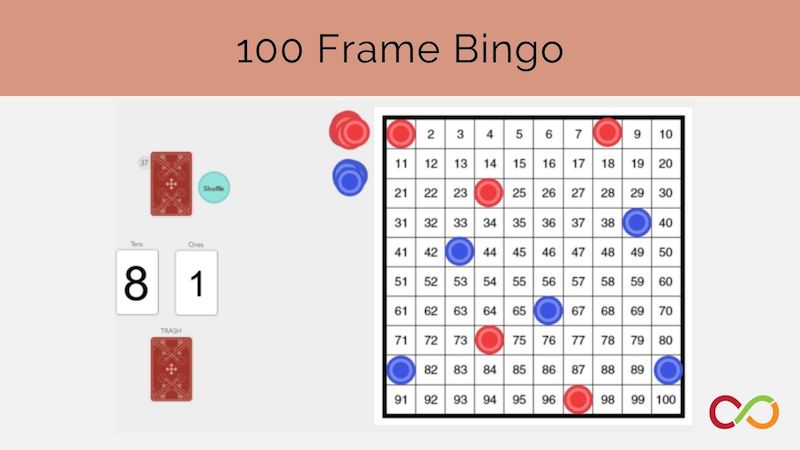The Soroban
Junior (Age 9 – 12)
Curriculum Goal
Junior: Number Sense
- Read, represent, compose, and decompose whole numbers up to and including 10 000, using appropriate tools and strategies, and describe various ways they are used in everyday life.
Context
- Teacher-led lesson showing students a visual representation of numbers followed by a whole-class activity with students split into small teams.
Materials
- Per one soroban:
- 25 pony beads: five reds, 20 whites
- Six large popsicle sticks
- Five thin wooden sticks to hold the beads
- Glue guns
- Dice
- History of Soroban Info Sheet (Appendix A)
- Challenge Cards (Appendix B)
Lesson
Creating the Soroban
- Step 1: Lay one large popsicle stick horizontal. Glue five evenly spaced thin wooden sticks perpendicular to the large popsicle stick. Glue another large popsicle stick on top of the first.
- Step 2: Add four white beads to each of the thin wooden sticks. Move them to the bottom so that they are touching the large popsicle sticks.
- Step 3: Take two more large popsicle sticks and glue them horizontally one third of the way down the vertical sticks (one on the front and one on the back).
- Step 4: Add one red bead to each of the thin wooden sticks.
- Step 5: Add two more large popsicle sticks and glue them horizontally at the top of the vertical sticks to complete the Soroban.
Lesson #1 – Exploring the Soroban
- Ask students, “How do you think people calculated large numbers before we had calculators?”
- Discuss possibilities. Then, let students explore the Soroban. Ask students if they have ever seen or used one before.
- Share a brief history of the Soroban (Appendix A).
- Introduce the different features of the Soroban:
- Red bead (Heavenly Beads) = five units
- White beads (Earthly Beads) = one unit
- Middle stick (Beam)
- Explain that a bead is counted when it touches the beam (i.e., the heavenly beads come down while the earthly beads must go up).
- 0 = the heavenly beads are up in heaven and the earthly beads are down on earth.
- Ask students, “Why do you think the ones column (rightmost) only goes up to nine?”
- Have students work together in small groups to represent the following numbers, starting with single digit numbers and moving up to five-digit numbers: two, seven, 13, 69, 325, 6479, and 10000.
Lesson # 2 – Whole Class Soroban Challenge
- When students have had an opportunity to practice creating numbers on the soroban, put students together to work in pairs or small teams.
- The educator chooses a playing card (Appendix B) and reads it to the class. The card will challenge the students to create a specific number using their soroban (e.g., Create the greatest number that has a two in the hundreds place, create the smallest four-digit number, or create a number as close to 400 as possible).
- Each team will then roll two dice. The sum of the two dice will represent the number of “moves” that team will get to complete their challenge.
- One move = A bead is counted when it touches the beam. (Ex. It would take three moves to create the number 21 as you would move two earthly beads in the tens place and one earthly bead in the ones place).
- Give students an appropriate amount of time to create their number, then have each team share the number they created with the class. Ask students to explain their reasoning.
- The team who was most able to complete the challenge receives a point. The first team to obtain three points wins the game.
- Have all students reset their Soroban and select a new challenge card. Repeat the above steps until a team has won.
Look Fors
- Do students understand how the Soroban can be used to represent place value?
- Do students draw conclusions regarding how the number of moves affects the number they can create?
Extension
- Have students pair up and develop addition/subtraction problems for each other to solve using the Soroban.
- Addition races: What is faster; a Soroban or a Calculator?
- Have students create their own challenge questions.
Share this lesson
Share on facebook
Share on twitter
Share on email


